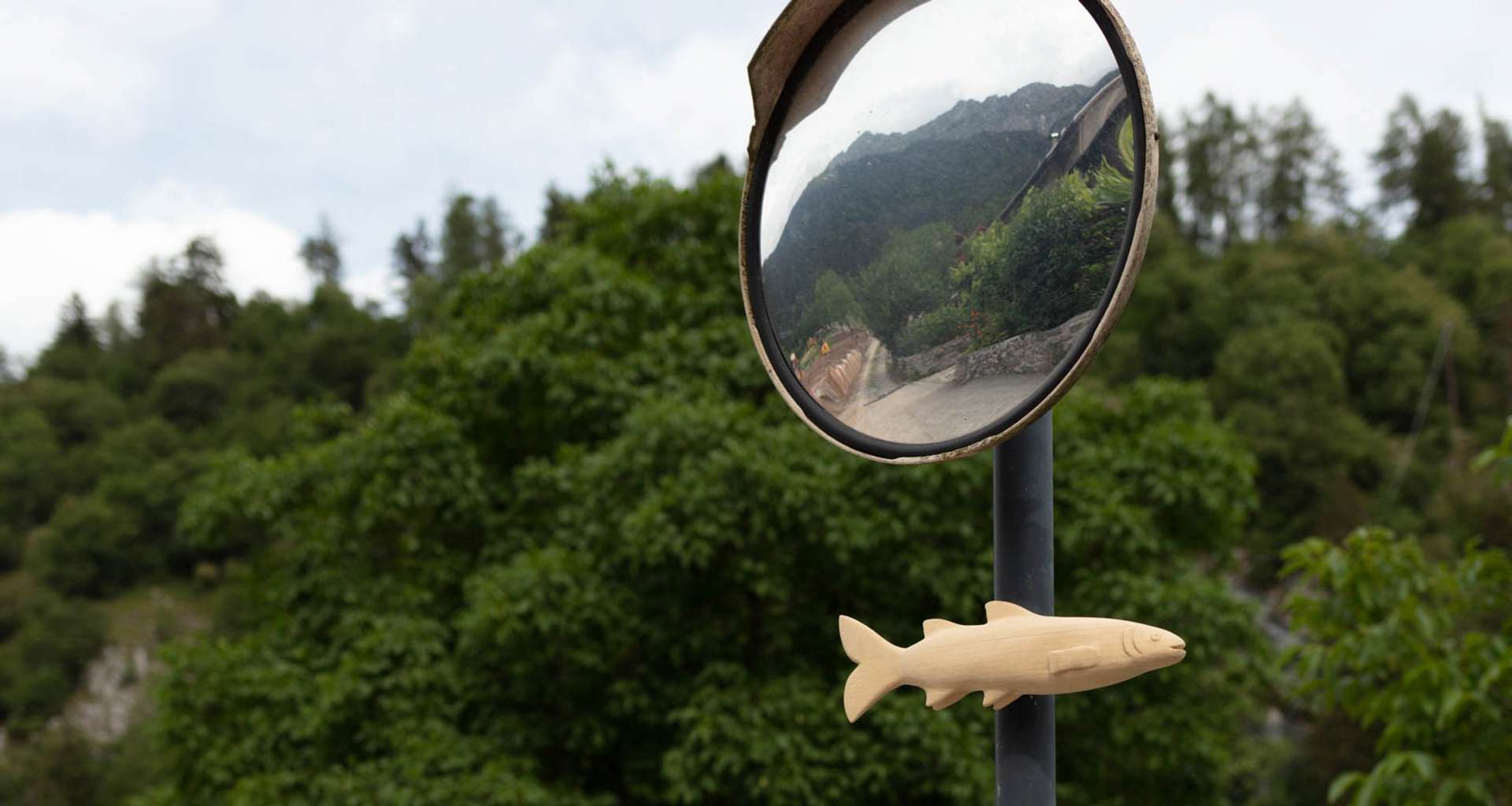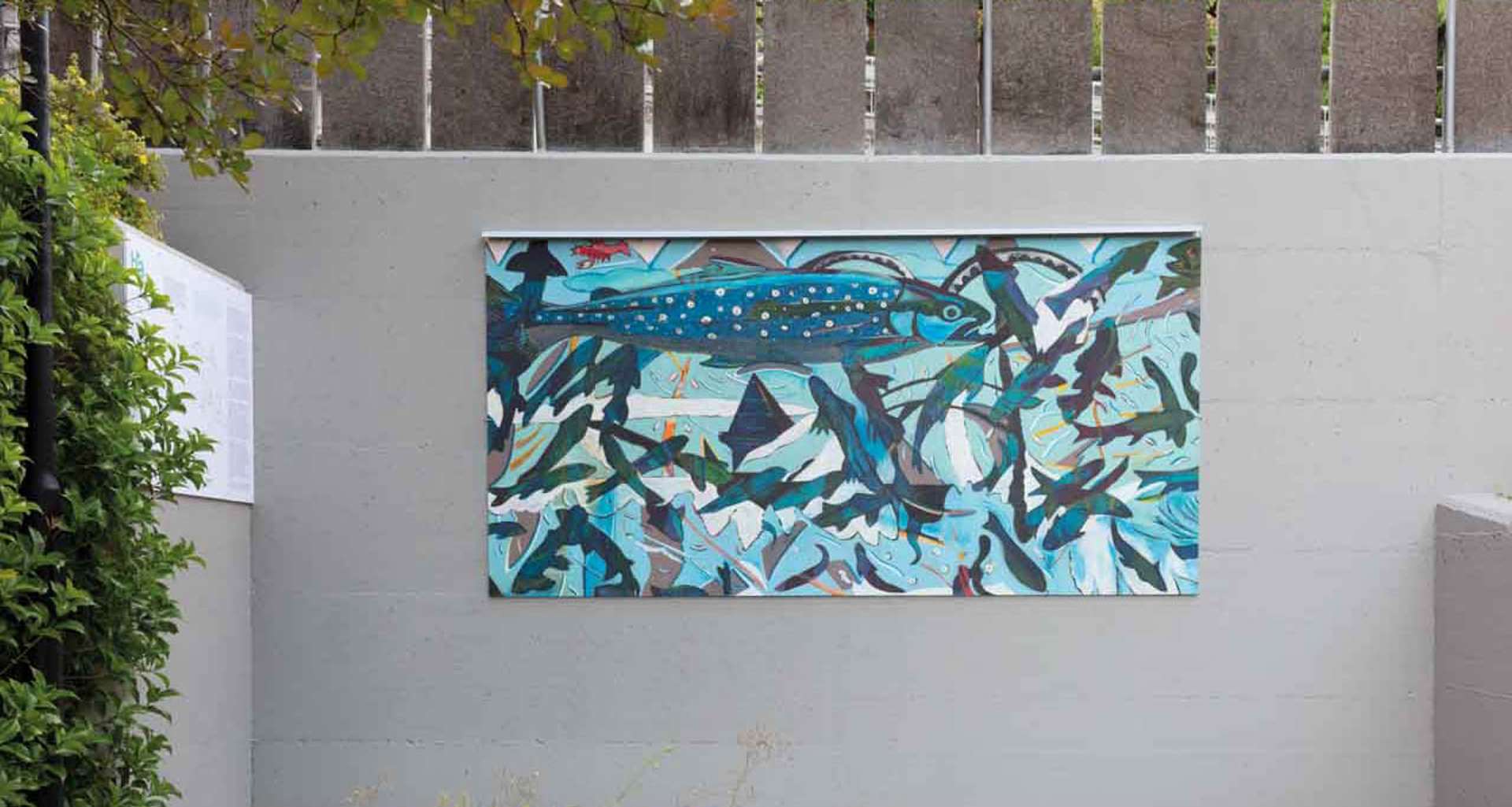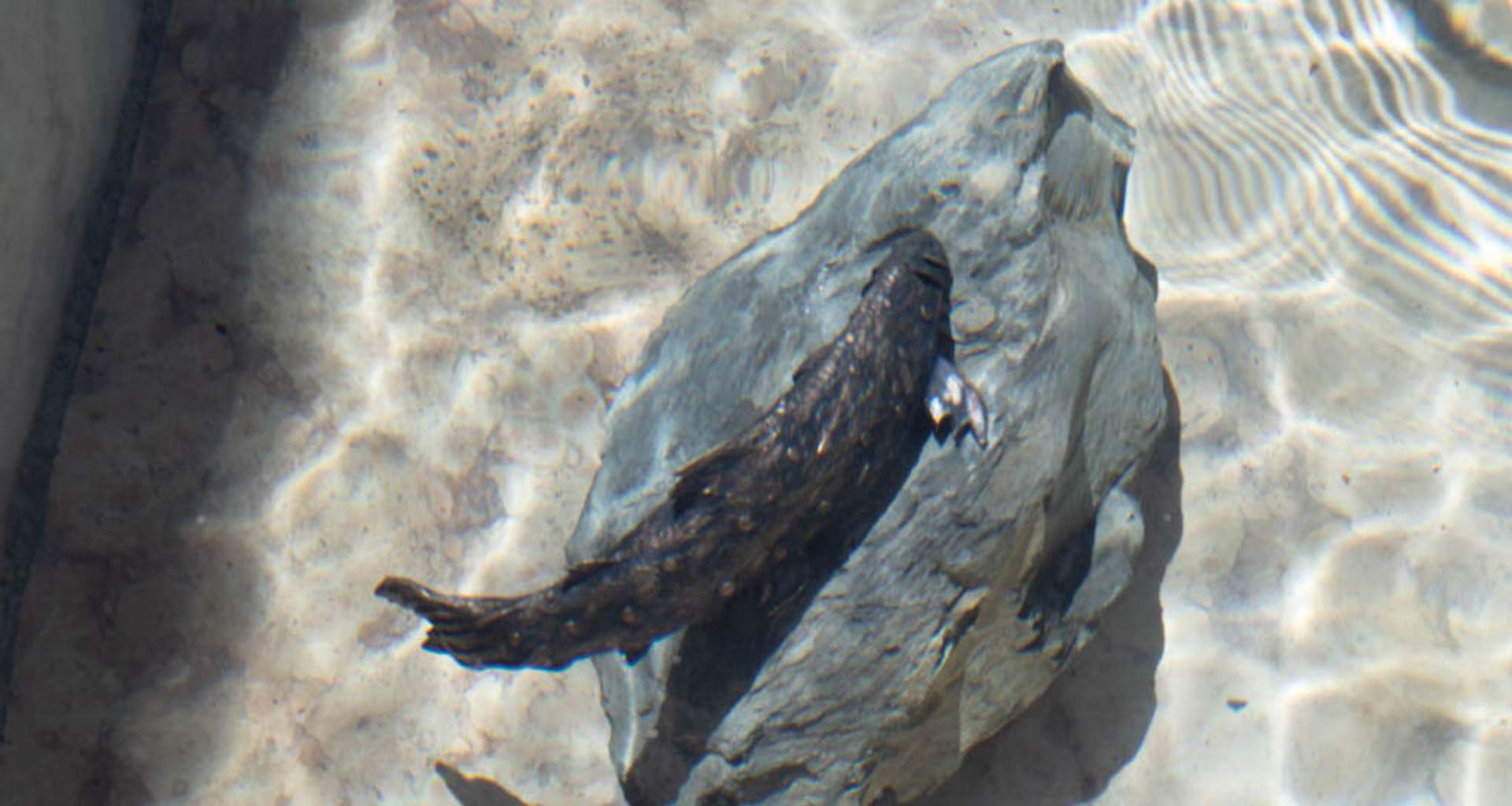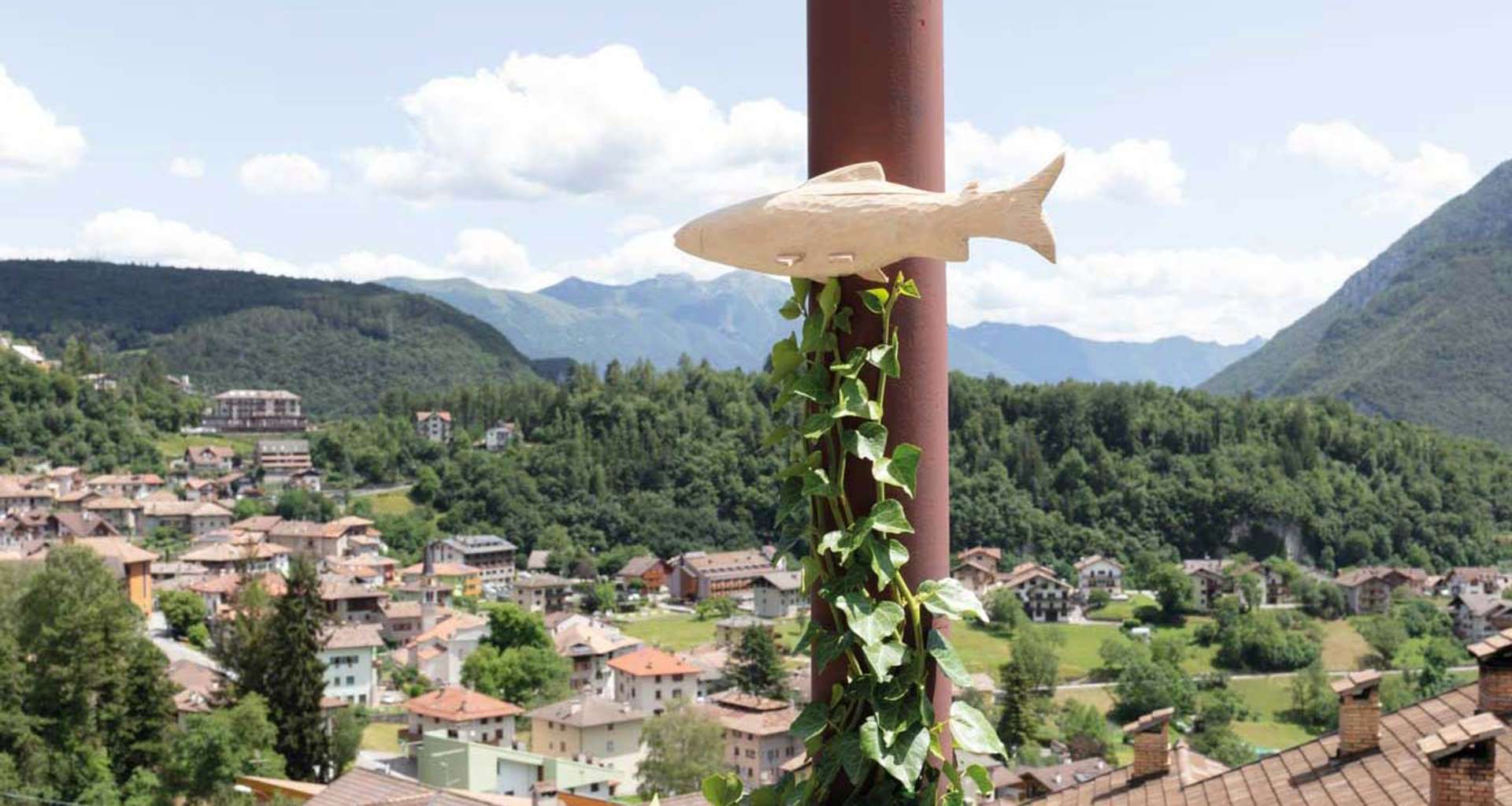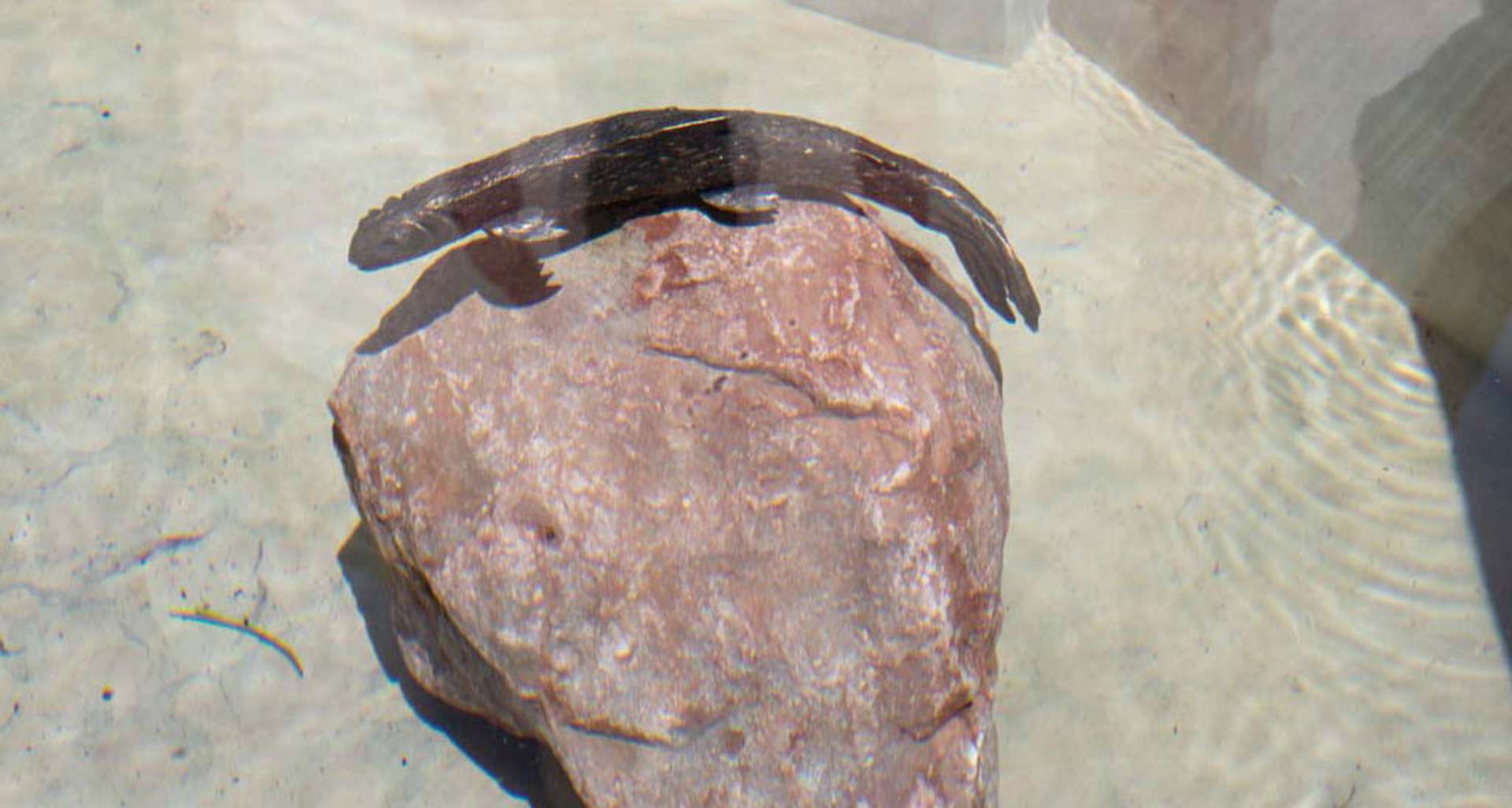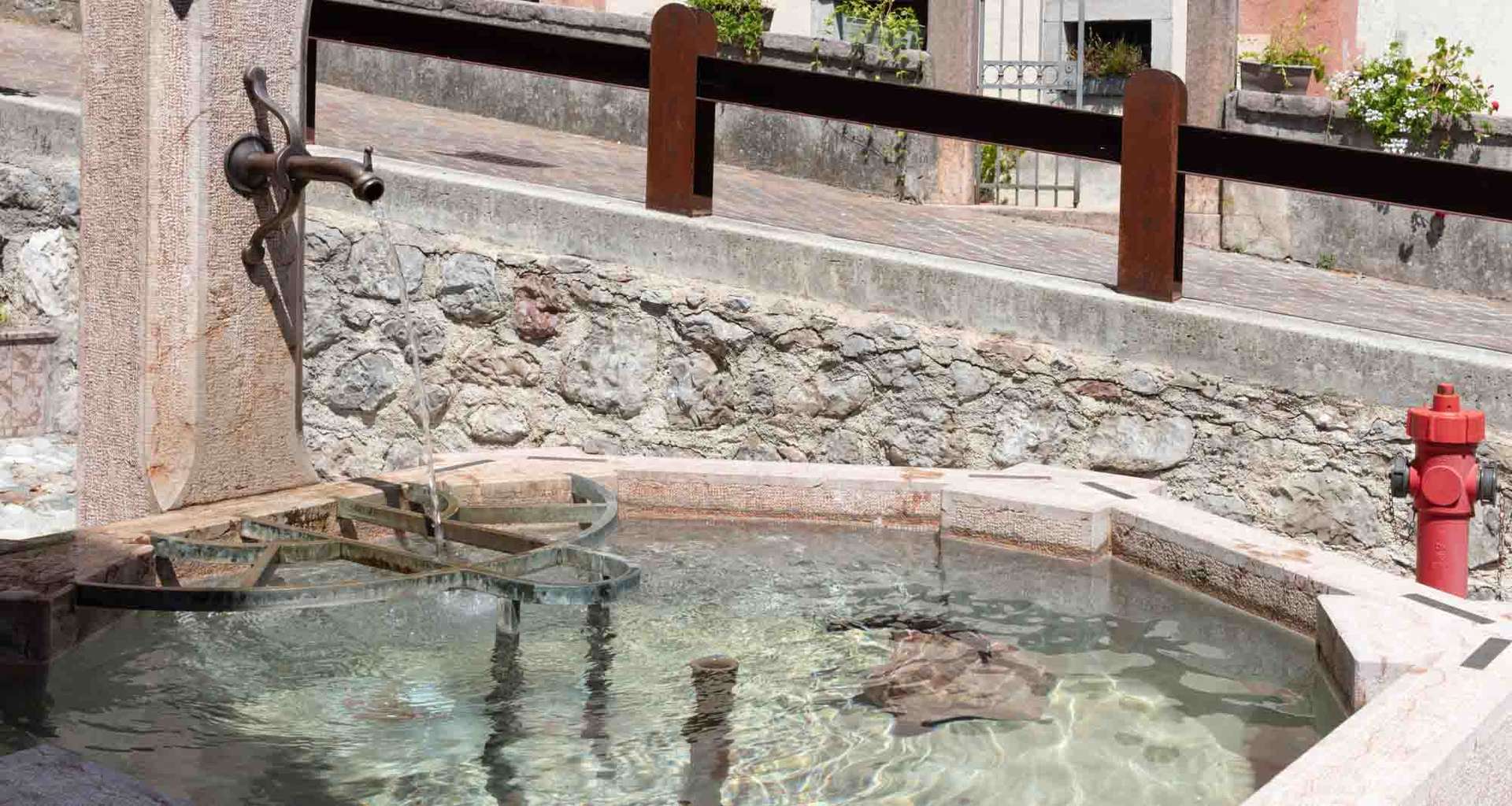In the shadow of the Brenta massif, mythological stories are still told, tales of distant times and unknown prehistoric landscapes that we can only imagine today, where there was ice instead of valleys and you could reach the mountain peaks without going down nor up the slopes. Only a few men went this far: hunters, migrants, adventurers who ascended the mountains in difficult, harsh conditions, walking on a vast sea of ice or rather, on what was left of it…
It is said that on a particularly cold day a man, while approaching the shore of a lake that no longer exists, met a large and agile Char that seemed to swim as if it were flying. When the man approached the fish he was surprised because it spoke to him, to tell him its incredible story:
the fish was a traveling Char, a prehistoric ghost of the Arctic Char family, a spirit of the cold who wandered in the mountains like man, floating in the icy waters in search of a place to rest. He spoke of his species that had managed to survive the last great marine extinction by being preserved in the ice as living relics. He helped the fish of his kind seek shelter at higher and higher altitudes where the water was colder and clearer.
From then on, the man was often helped by the fish that he found in the icy waters who supported him in hard times. The fish was used to the cold and did not fear winters, while over time men learned to live on the mountain slopes downstream, which were becoming increasingly warm and wide and where the legend of the Salmerino Viandante or Arctic Char remained.
Today the Char still swims in the lakes and streams that descend between the valleys of the Brenta massif and who knows, perhaps some of them have that ancient Arctic Char fish species as an ancestor.
With the rising water temperature of alpine lakes, the fish, due to climate change, is gradually losing its habitat. In San Lorenzo Dorsino, this symbol of prehistoric resilience arrives in the village through the work of Giulia Mangoni that exudes a symbiotic relationship between art and craftsmanship, creating unprecedented links between past and present and biodiversity and society in honor of the symbolic fish of the local area and that spirit of closeness that is characteristic of Alpine communities. The project consists of ten bronze handmade sculptures, mounted on local fossil-rich marine stone; with the existing architecture of the village in mind, in the various surrounding hamlets of the village the works are placed in pre-existing traditional stone fountains. The shape of the fish, between one fountain and another, differs each time, and can be glimpsed submerged in icy water. The works in bronze and stone are followed by a series of handcrafted wooden sculptures manufactured by an association of local artisans, positioned along a route that aims to encourage visitors to explore San Lorenzo. To introduce the project, a painting depicting the Traveling Char introduces the viewer to the thousand- year-history that links this fish to the Alps.
ㅤ
Permanent works:
Giulia Mangoni, Il Salmerino Viandante, 2022, installation, 5 sculptures in wax cast bronze.
San Lorenzo Dorsino (TN), Trentino-Alto Adige
COMING FROM THE HIGHEST STRETCHES OF MOUNTAIN STREAMS, THE PRESENCE OF THE ARCTIC CHARFISH REMINDS US OF THE MEASURE OF THE GEOLOGICAL TIME IN WHICH WE AS A SPECIES HAVE INHABITED THE EARTH. THE CHAR APPEARS IN THIS PROJECT TO CONFRONT THE INHABITANTS OF SAN LORENZO DORSINO WITH THE CURRENT ECOLOGICAL AND CLIMATIC CRISIS FOR WHICH THE INTERTWINING OF BIODIVERSITY PRESERVATION, SUSTAINABLE AGRICULTURE AND FARMING SYSTEMS BECOMES INCREASINGLY FUNDAMENTAL FOR OUR FUTURE ON THE PLANET
Giulia Mangoni (Isola del Liri, 1991) is an Italian-Brazilian artist whose practice revolves around the ethics of return; she is interested in creating orchestrated interventions through the lens of painting in order to deconstruct notions of memory and identity linked to specific geographies and decentralised communities. Her work develops through visual methods of personal narration, often the result of a dialogue with several voices, whose influences, relationships and different contributions trigger a mechanism similar to the wireless telephone, capable of giving life to works that are open and in continuous evolution. Born in 1991 in Isola del Liri (FR), Mangoni grew up between Italy and Brazil and has now returned to live and work in her hometown. Mangoni has a Foundation Degree in Art & Design from Falmouth University of the Arts (2011), a Bachelor of Painting (Hons) from City & Guilds of London Art School (2014), where she was also a winner of both the Skinner Connard’s Travel Award Prize and the Chadwick Healey Prize for painting, and an MFA from the SVA Art Practice program in New York City, (2019).
In recent years, Mangoni has participated in national and international exhibitions, including: Bits & Cream. Metabolizzazione d’Archivio, personal exhibition at ArtNoble gallery, Milan; From the Island of Liri, solo show curated by Juliana Leandra at Dreambox Lab, New York; Ladder to The Moon at Monitor Gallery, Rome; VIVERE DI PAESAGGIO, curated by Mirta di Argenzio at APALAZZO gallery, Brescia; Zeitgeber (donatore di tempo) at ArtNoble gallery, Milan; The New Abnormal, Straperetana curated by Saverio Verini. Furthermore, in 2020 Mangoni participated in the scholarship program at CASTRO Projects in Rome, winning the Scovaventi Italian Fellowship scholarship. Currently, in addition to many travelling projects and exhibitions, Mangoni continues to deepen her research by communicating with artisans, agronomists and breeders of native species in the Ciociaro area.
THROUGH THE POSITIONING OF OBJECTS THAT COMBINES INDIVIDUAL ARTISTIC PRACTISE WITH COLLECTIVE ARTISANAL PRACTISE, WE HOPE TO CONCEPTUALLY APPROACH THE CONCEPT THAT COMBINES THE PHYSICAL, BIOLOGICAL AND ANTHROPIC RESOURCES OF THIS PLACE IN ORDER TO ENHANCE THE LOCAL AREA IN AN ETHICAL AND STIMULATING WAY, BOTH FOR THE VISITOR AND FOR THE LOCAL RESIDENTS, WORKING WITH THEM TO CREATE MOMENTS OF SELF- REPRESENTATION AND SOCIAL REFLECTION IN THIS CONTEXT
San Lorenzo Dorsino is an Italian town of about 1500 inhabitants in the province of Trento. This town came about through the merging of two different places: San Lorenzo in Banale and Dorsino, which is immersed in the greenery of the Adamello Brenta Natural Park. The past is palpable here: old peasant houses lean against each other, connected by arcades, hallways and internal courtyards. You will also find small churches coloured by Baschenis’ frescoes, (a famous 14th – 16th Century fresco painting family, from Northern Italy). A tranquil and authentic mountain village where life moves slowly, in step with nature. The natural landscape of the Val d’Ambiez, the gateway to the Brenta Dolomites, is particularly wild. This valley, which has been part the history of mountaineering, begins narrow and nestled between rocky walls before suddenly opening up onto the famous pastures and peaks of the Dolomites, now a UNESCO World Heritage Site. You can take part in a variety of outdoor activities here such as: excursions on foot or by bike, climbing the Falesia Dimentica, and fishing in the emerald waters of Lake Nembia which although smaller than nearby Lake Molveno is a WWF nature reserve. A famous local product is the ciuìga, a sausage made with white turnips produced exclusively in San Lorenzo in Banale.
